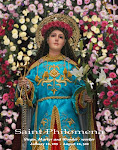In November 1955, Worship published an article by Bugnini entitled "Why a Liturgy Reform?" It may be said to articulate some of the rationale behind the decree Cum Nostra. However, Bugnini also enunciated principles he regards as applicable for a general reform. He asserts:
"Liturgical reform is something that is needed if the Liturgy
is to preserve its vitality and splendour...
"The act of the Church [the liturgical rites]...bounded by
time, by space, by the ministers who perform it, is necessarily linked in its
exercise to the changeableness of human matters.
"On this account the Liturgy in its structure has required a
corpus of formulas, gestures, rites, and ceremonies which make of it a living
organism, exposed like all organisms to outside influences, to luxuriant
vitality and, sometimes, to decay."
Bugnini's opening sentence betrays his agenda. He is writing in the "age of reform." As Crichton related, pressure was being applied to achieve reform at this time. And, according to Bugnini, reform is a necessity. Yet, while one must accept that liturgical reform is indeed part of the life of the Church, surely reform must be subservient to the development of the liturgy, in which there is a dialogue between Tradition and adaptation, wherein it is Tradition that must be persuaded. This distinction is important.
Bugnini rightly notes the changeableness of the human elements of the Liturgy, but his account is defective. He does not give any indication that liturgical elements of human origin, the Roman Canon for example, are integral parts of liturgical Tradition that have never been regarded as chageable. His account of the nature of objective liturgical Tradition is therefore limited. We also note that in his account of the organic nature of the Liturgy (he does not speak of liturgical reform as organic), Bugnini proffers the possibility, popular in his circles, that the Liturgy may be decayed.
A. Reid OSB, The Organic Development of the Liturgy, 2005, 214-215.










No comments:
Post a Comment